In Istanbul, where minarets pierce the skyline and the call to prayer echoes over the Bosphorus, the Blue Mosque stands not just as a mosque-but as the soul of the city. You don’t just see it; you feel it. Whether you’re a lifelong resident of Kadıköy, a new expat in Beşiktaş, or a traveler who’s spent three days hopping between Grand Bazaar stalls and ferry rides to Princes’ Islands, this isn’t just another Istanbul attraction. It’s the one place that reminds you why this city has endured for 2,500 years.
It’s Not Just Blue-It’s a Masterpiece in Tile and Light
People call it the Blue Mosque, but its real name is the Sultan Ahmed Mosque. The nickname comes from the 20,000 hand-painted İznik tiles that line its interior, mostly in shades of cobalt, turquoise, and sage green. These aren’t mass-produced imports-they were fired in the same kilns near Nicaea that supplied the Topkapı Palace in the 1600s. Look closely at the floral patterns: tulips, carnations, and cypress trees are carved in perfect symmetry, each tile unique. No two are exactly alike.
On a sunny morning, the light filters through 260 stained-glass windows, casting soft blue halos across the prayer carpet. You’ll notice locals removing their shoes at the entrance, not because they’re told to, but because it’s instinctive. A grandmother in a headscarf whispers a prayer as she brushes her fingers along the marble base. A teenager in a hoodie snaps a photo, then quickly lowers his phone-this isn’t a backdrop for TikTok, it’s a sacred space.
Architecture That Defies Gravity-and Time
When Sultan Ahmed I commissioned the mosque in 1609, he wanted to rival the Hagia Sophia across the square. He didn’t just copy it-he improved it. Six minarets. One of only two mosques in the world with that feature. The other? Mecca’s Grand Mosque. Istanbul’s skyline changed that day.
The central dome, 43 meters high, seems to float above the prayer hall. No visible supports. Just arches, piers, and centuries of engineering wisdom. The architect, Sedefkar Mehmed Ağa, studied the Hagia Sophia’s acoustics and replicated its echo-free clarity. Stand in the center, clap once, and you’ll hear it-the sound ripples, then fades, as if the building itself is breathing.
Outside, the courtyard is paved with marble from Marmara Island. You’ll see families picnicking under the arcades, students studying under the shade, and old men sipping çay from tiny glasses while watching the pigeons. This isn’t a tourist zone-it’s a living neighborhood. The mosque doesn’t exist apart from the city. It’s woven into it.
When to Go: Avoid the Crowds, Catch the Magic
If you’re a local, you know the best time to visit isn’t noon on a Saturday. It’s 7:30 a.m. on a Tuesday. That’s when the morning light hits the dome just right, and the only people around are a few worshippers, a couple of photographers from Ankara, and the mosque’s caretaker, Mehmet Bey, who’s been sweeping the same tiles for 37 years.
Weekends are packed. Tour buses line up at the entrance like taxis at Taksim. Lines stretch past the fountain where pilgrims wash their feet before prayer. If you’re visiting during Ramadan, the mosque glows at night-lanterns hang from every arch, and the call to prayer carries further than usual, echoing over the Golden Horn.
Pro tip: Skip the guided tours that start at 10 a.m. Instead, walk from Sultanahmet Square after breakfast. Grab a simit from Hacı Abdullah, the stall right across from the mosque’s main gate. Eat it while watching the sun rise over the minarets. You’ll get a better view than any Instagram filter.
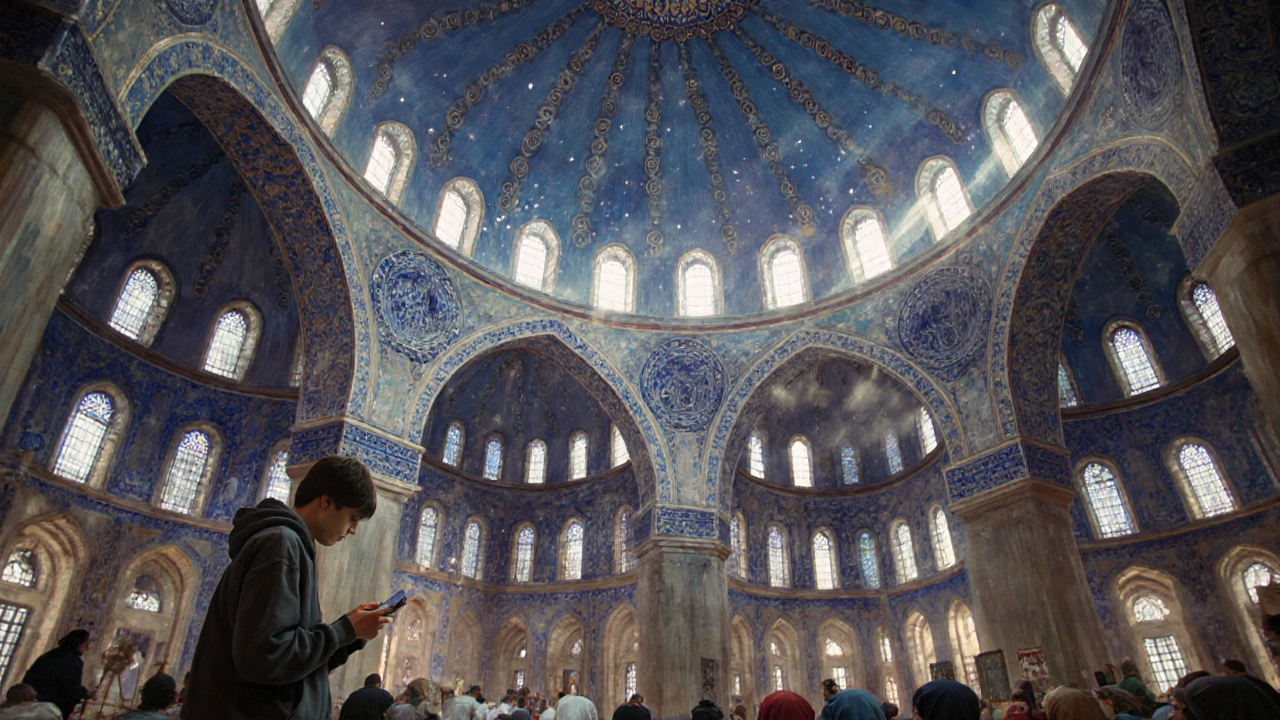
What to Wear-And What Not to Wear
You don’t need to wear a headscarf if you’re a woman. But you do need to cover your shoulders and knees. The mosque provides free robes at the entrance, but they’re often worn, too tight, or missing a strap. If you’re visiting during winter, wear long pants and a sweater. You’ll thank yourself when you’re standing outside in the wind after your visit.
Men should avoid shorts and tank tops. No one will stop you, but you’ll feel the stares. Locals know how to dress respectfully-even the guys from Üsküdar who wear Nike sneakers and ripped jeans know to roll up their pant legs before entering.
And please-no selfie sticks. No loud talking. No dragging your bag across the prayer rugs. This isn’t the Hagia Sophia museum. This is still an active place of worship. Five times a day, the faithful come here. They’re not tourists. They’re neighbors.
More Than a Mosque-A Cultural Anchor
The Blue Mosque doesn’t exist in isolation. It’s part of a larger complex that includes a madrasa, a hospital, a soup kitchen, and the tomb of Sultan Ahmed I. Walk behind the mosque, past the old fountain, and you’ll find the tombs of six sultans. Their graves are simple, covered in green cloth. Locals leave small notes-prayers, wishes, thanks. You’ll see a mother whispering to her child, pointing to the tomb. "This is where our history sleeps," she says.
Just outside the complex, on the corner of Sultanahmet Caddesi, you’ll find the old Ottoman-era clock tower. It still chimes every hour. And if you’re lucky, you’ll catch the sound of the muezzin practicing his call-clear, strong, and slow-just before the evening prayer. That’s when Istanbul feels most alive.
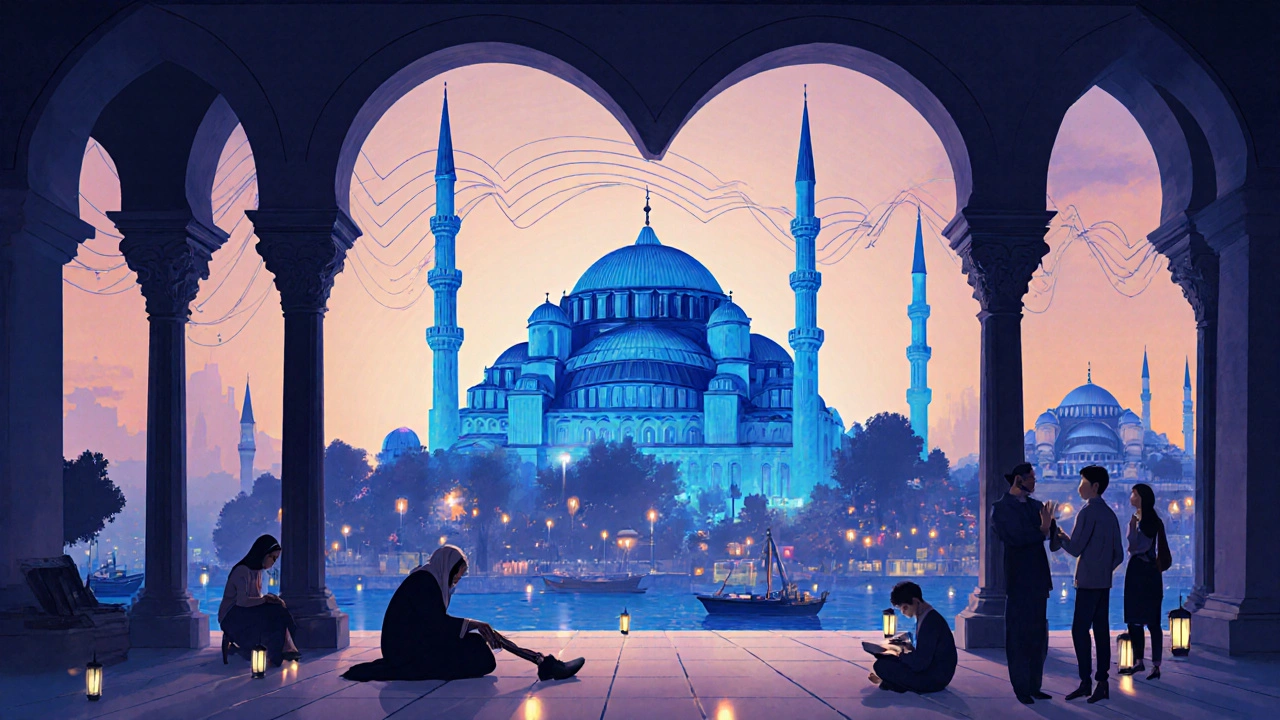
Why This Isn’t Just for Tourists
If you live in Istanbul, you’ve probably walked past the Blue Mosque a hundred times. Maybe you’ve even taken a shortcut through the courtyard on your way to the tram. But have you ever stopped? Really stopped? Sat on the steps? Watched the light change? Listened to the silence between the calls to prayer?
This isn’t just a monument. It’s the quiet heartbeat of the city. When the city feels too loud-when the traffic on E5 is endless, when the Bosphorus ferry is late, when the news is heavy-this is the place you come to remember what still holds us together.
It’s where a Kurdish grandmother from Diyarbakır and a German expat from Kreuzberg both remove their shoes and sit side by side in the same quiet corner. Where a university student from Ankara prays for her exam results, and a retired fisherman from Kadıköy thanks God for another day.
You don’t need to believe in God to feel something here. You just need to be human.
What to Do After You Visit
After you leave the Blue Mosque, don’t rush to the next attraction. Walk down to the Hippodrome. Sit on the ancient Serpent Column. Watch the street artists sketch tourists. Then, head to the nearby Arasta Bazaar-smaller, quieter, and full of real Turkish ceramics, handwoven towels, and rosewater soap from Konya. Buy a small tea set. Not for a gift. For yourself.
Later, find a café on the waterfront in Eminönü. Order a cup of Turkish coffee with a piece of baklava from Karaköy Güllüoğlu. Watch the ferries glide past the Galata Tower. Let the day slow down. That’s when Istanbul reveals itself-not in the grand monuments, but in the quiet moments between them.
Is the Blue Mosque open to non-Muslim visitors?
Yes, the Blue Mosque welcomes non-Muslim visitors during non-prayer hours. The mosque is closed to tourists for about 90 minutes during each of the five daily prayer times, especially during Friday midday prayers. The best times to visit are early morning (before 9 a.m.) or late afternoon (after 4:30 p.m.). Always check the official mosque schedule posted near the entrance.
Can I take photos inside the Blue Mosque?
Photography is allowed, but not during prayer times. Avoid using flash, and never photograph worshippers without asking. Tripods and selfie sticks are prohibited. The most beautiful shots are taken from the courtyard or the upper gallery, which you can access by asking a staff member. The light during sunrise and sunset is unmatched.
How long does it take to visit the Blue Mosque?
You can see the main prayer hall in 20-30 minutes if you’re just walking through. But to truly experience it, plan for an hour. Sit quietly. Watch the light shift. Read the tile inscriptions. Visit the tombs behind the mosque. If you’re visiting during Ramadan or a holiday, allow extra time-crowds swell, and the atmosphere becomes even more powerful.
Is the Blue Mosque the same as the Hagia Sophia?
No. The Hagia Sophia was originally a Byzantine church, then a mosque, and now a museum. The Blue Mosque was built as a mosque in 1616 and remains an active place of worship. They’re only 200 meters apart, but they represent two different eras: one from the Christian Byzantine world, the other from the Ottoman Islamic golden age. Together, they show how Istanbul layers its history.
What’s the best way to get to the Blue Mosque from Taksim?
Take the M2 metro from Taksim to Sultanahmet station (about 25 minutes). From there, it’s a 10-minute walk through the historic district. Alternatively, take the tram T1 from Kabataş or Eminönü-both lines stop at Sultanahmet. Avoid taxis during rush hour; traffic on the Bosphorus bridges can add 45 minutes to your trip. Walking from the Galata Bridge along the Golden Horn is scenic and takes about 40 minutes.
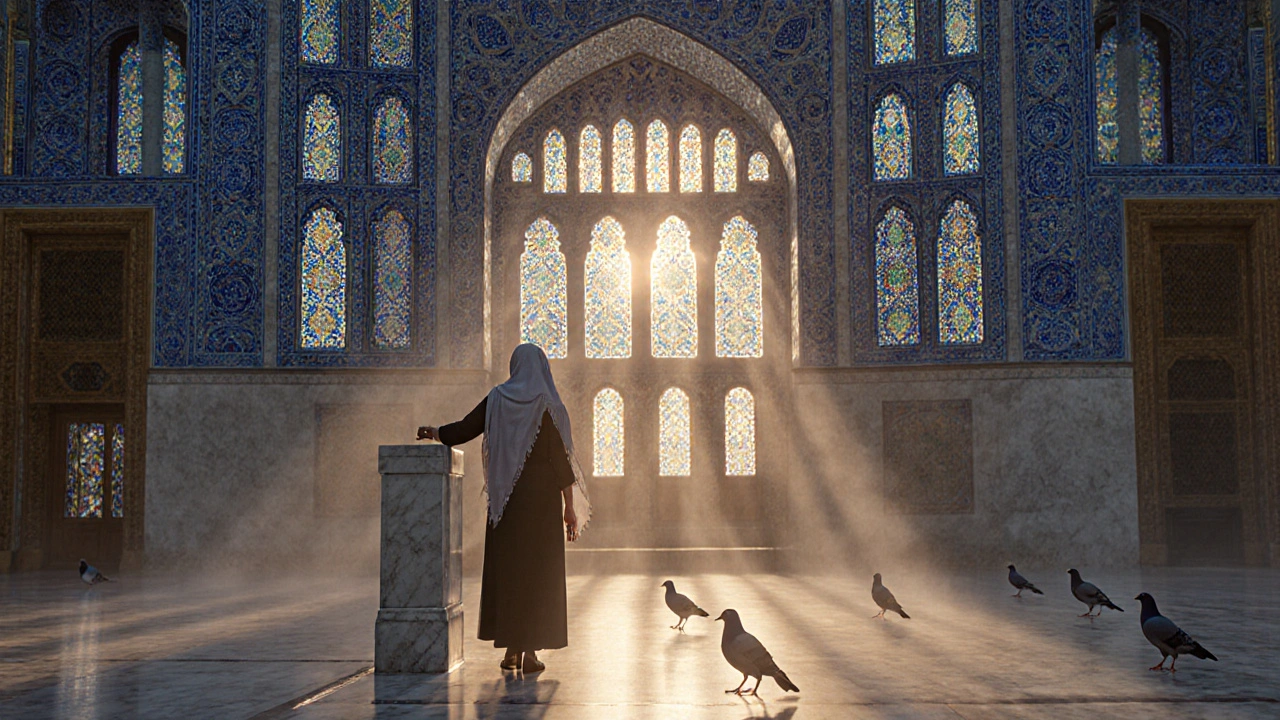

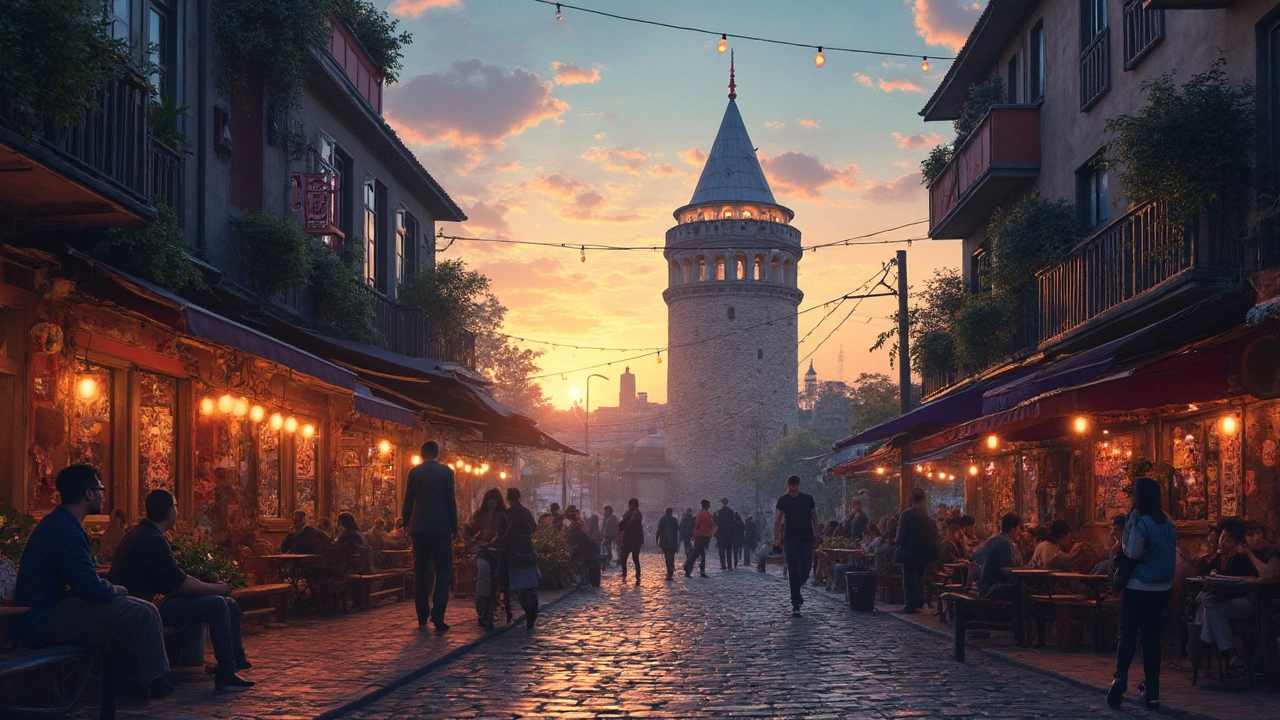

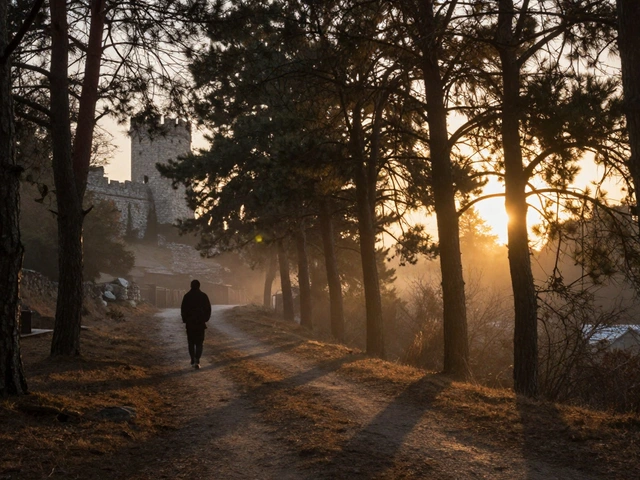
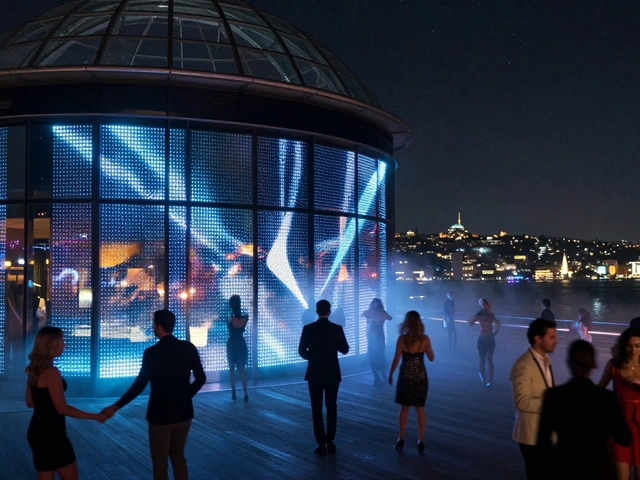
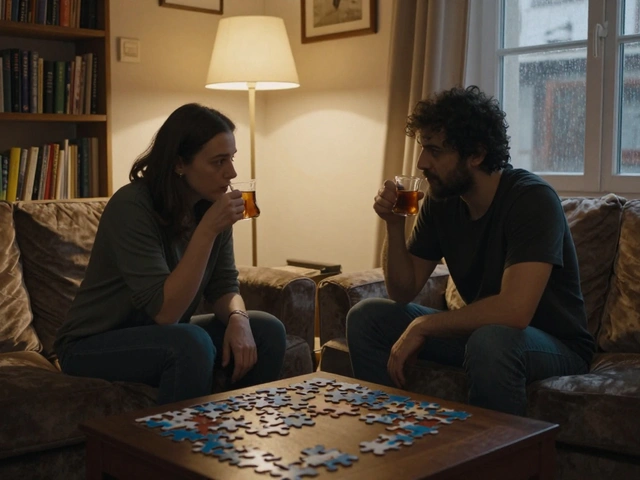
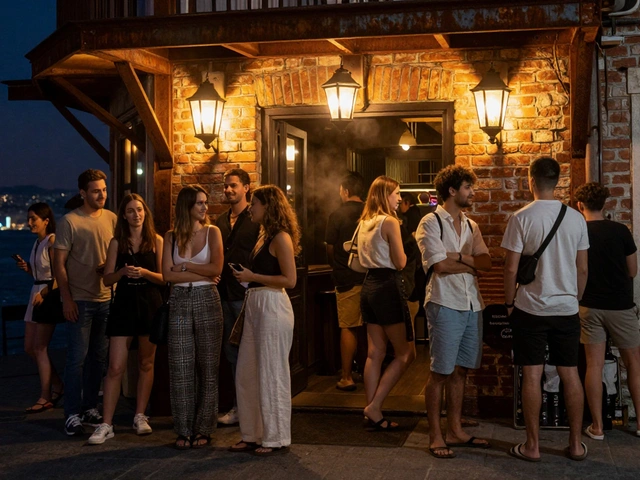

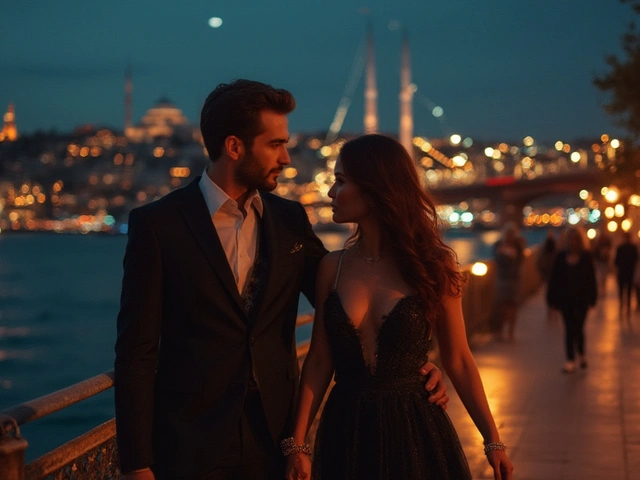

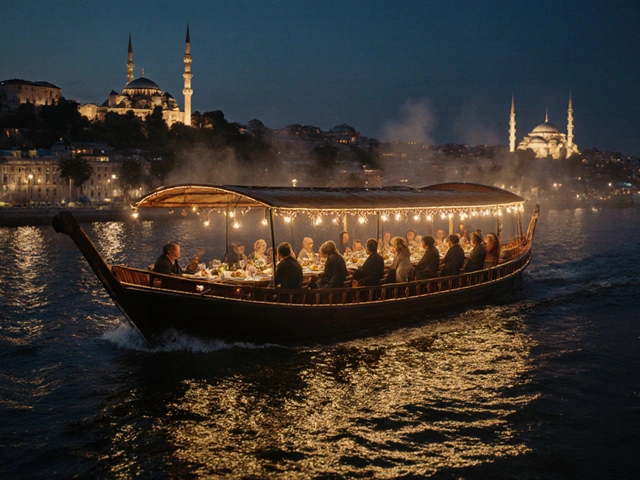

8 Comments
The way the light hits those İznik tiles at dawn… I cried. Not because I’m religious, but because it felt like the building was breathing. I sat on the steps for 45 minutes just watching the pigeons and the old man sweeping. No one bothered me. No one rushed me. That’s the magic.
Also, the free robes? Don’t use them. I wore my own long skirt and sweater. The ones they give you smell like 37 years of foot traffic and regret.
Architecturally, the Sultan Ahmed Mosque represents a phenomenological convergence of sacred geometry and phenomenological presence-its central dome, unanchored by visible supports, functions as a metaphysical fulcrum that collapses the binary between materiality and transcendence.
And the acoustics? Pure resonance engineering. It’s not just echo-it’s sonic embodiment. The way the call to prayer dissolves into silence? That’s not design. That’s divine algorithm.
Okay but have you ever wondered why the Blue Mosque has SIX minarets? That’s illegal. Only Mecca is allowed six. Sultan Ahmed I broke the rules on purpose-because he knew the Ottomans were being watched. The Vatican? The British? They were terrified. That’s why they turned Hagia Sophia into a museum-so they could erase the fact that Istanbul had a mosque that outshone Christendom’s greatest church.
And the tiles? They’re not just tiles. They’re coded messages. Look at the tulips-those are symbols of resistance. The Ottoman elite used floral patterns to hide anti-imperial poetry. The British stole 12,000 of them in 1912. They’re still in the V&A. That’s why the colors look… off. They’re missing the real ones.
I visited last October, and I must say, the experience was profoundly moving. The attention to detail in the tilework is unparalleled, and the architectural symmetry is a testament to the Ottoman Empire’s mastery of spatial harmony.
That said, I was disappointed by the lack of clear signage regarding prayer times. I nearly walked in during Dhuhr-thankfully, a kind staff member gestured me away. Please, fellow travelers: always check the schedule. Respect is not optional.
It’s not a masterpiece. It’s a showpiece. The Blue Mosque is the Ottoman Empire flexing-six minarets because they couldn’t compete with Hagia Sophia’s history, so they built louder.
And the tiles? Pretty, sure. But they’re decorative propaganda. The real soul of Istanbul is in the back alleys of Kadıköy, not in this gilded cage for tourists who think ‘cultural appreciation’ means taking selfies with a prayer rug in the background.
Also, no one needs to tell you not to use a selfie stick. If you’re that clueless, maybe stay home.
They say it’s a mosque. But why is it open to tourists? Why are there cameras everywhere? Why do they sell postcards of the prayer hall? I’ve studied the archives. The British intelligence service funded the restoration in 1953 to soften Muslim resistance. The tiles? They were replaced with ones that contain microchips. Tiny ones. To track who prays where. That’s why the carpet is always clean-because they vacuum it with surveillance drones.
And the call to prayer? It’s not religious. It’s a frequency signal. I’ve recorded it. It pulses at 7.83 Hz-the Schumann resonance. They’re syncing the city to a global mind-control network. You think you’re feeling peace? You’re being tuned.
How can you call this a spiritual experience when half the people there are wearing crop tops and flip-flops? I saw a girl in a mini-skirt taking a TikTok video right in front of the mihrab. And no one stopped her. Where is the dignity? Where is the respect?
This isn’t a theme park. It’s a house of God. If you can’t dress modestly, don’t come. And if you think your Instagram post is more important than someone’s prayer, then you’ve already lost your soul.
And don’t even get me started on the tourists who bring snacks into the courtyard. I saw someone eating a donut while standing next to a woman in full hijab, weeping. Disgusting.
No selfie sticks. No shorts. No excuses. This isn’t Disneyland. It’s a mosque.